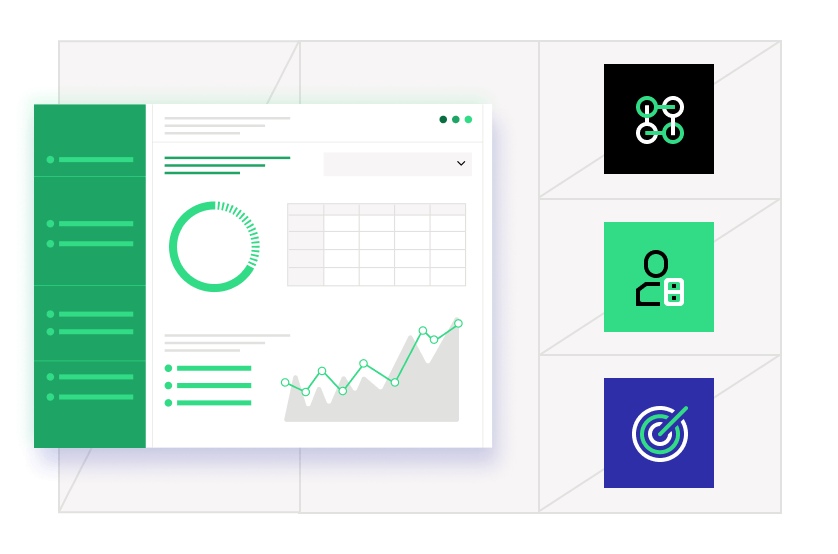In recent years, the successful activation of offline, first-party data has become table stakes for smart marketers looking to deliver customer-centric experiences. And with cookie deprecation underway, starting with Google Chrome’s 1% depreciation of third-party cookies, first-party data has never been more critical in maintaining addressability and preparing your marketing initiatives for the future. Because of this, the number of companies leveraging data onboarding for activation has grown considerably. But what exactly is data onboarding? What are the different use cases it enables, and what is required to get started?
What is data onboarding?
Data onboarding is a service that brings offline data online. It can dramatically improve cross-channel marketing insights and attribution, expand target audience size, and enhance campaign performance.
In order to bring CRM data online, a “match” must be made between the offline user profile and the online presence of that user. In the offline world, common identifiers include email address, physical address, phone number, and name. In the online world, the common identifier used is a cookie, an encrypted text file that sits in a user’s browser. Onboarding is the process by which a match occurs of both data sets between the offline and online worlds.
In the future, with the end of third-party cookies as an identifier, this workflow will be obsolete. The absence of third-party cookies will severely limit these use cases, unless marketers have a strategy to maintain addressability to fully realize the value of onboarding. Marketers will need to rely on addressability solutions based on a strong identity infrastructure to still be able to target offline audiences online.
What are the benefits of data onboarding?
In today’s identity-driven marketing landscape, the importance of data onboarding is paramount for businesses aiming to enhance their customer relationships and marketing strategies. Effective data onboarding not only allows for the integration of offline and online customer data but also significantly improves the depth and utility of customer insights.
5 key advantages of why data onboarding is important include:
- Enhanced cross-channel marketing insights: By bridging offline and online data, businesses can gain a deep understanding of their customer behavior, leading to more precise targeting and personalized campaign strategies.
- Broader marketing reach: Onboarding increases the match rate for user data that are uploaded to the advertising platform, enabling marketers to connect with their target audiences at a greater scale across various channels.
- Improved customer insights: Centralizing data from various sources into a single system reduces silos, improves data quality, and offers a holistic view of the customer journey.
- Improved campaign performance: Data onboarding helps boost campaign performance by combining what customers do in stores and what customers do with their online activities. This helps markets create better marketing campaigns that are relevant and engaging to them.
- Informed decision-making: Data onboarding enhances decision-making and provides a fuller understanding of customer behaviors and preferences. Understanding this ensures that you are spending time on campaigns that have a high probability of working.
How does data onboarding work?
The data onboarding process can be broken down into four simple steps:
1. Data collection
The initial step in data onboarding involves uploading offline, first-party data to an onboarding provider. For organizations who are working with legacy providers, it’s essential to format, clean, and normalize data before it’s uploaded, which can be a cumbersome and error-prone process. Choosing a provider that manages data formatting and preparation can help simplify this task for you.
2. Hashing data
Data undergoes a process called hashing when data is uploaded onto an onboarding platform. This is a critical step that can transform the data into a secure string of characters which is essential for security — allowing for safe data matching without exposing any identifiable personal data.
3. Create a unified view customer view
In data onboarding, when it comes to creating a unified customer view, customer data is first made pseudonymous and then matched with online IDs like cookies. This links offline data to online profiles, creating a complete 360-degree view of each customer by combining all their interactions into one user profile.
4. Maximize your marketing impact
To maximize your marketing impact, the activation phase is where the real value of the onboarding process comes into play. After your data has been onboarded it’s then ready for use in targeted advertising, personalization, and/or analytics. It allows you to create highly customizable experiences for your customers and engage them with an impactful advertising message.
What should you look for in a data onboarding provider?
When a marketer wants to bring their CRM data online, they work with an onboarding provider who has a large network of match partners—essentially, a combination of the leading online websites and publishers. There are a handful of data onboarding providers, and each differs in terms of match technique and quality.
Here are the key characteristics to gauge when looking for an onboarding provider:
Accuracy
Match accuracy is based on how often the onboarding provider finds the correct match between the offline contact information and the online user. When accuracy is of paramount concern, it’s important to work with an onboarding provider that deterministically matches data and is transparent about the match process. With a reliable addressability solution, marketers won’t have to make these trade-offs and precision would be achieved at scale.
Addressability
For years, the digital advertising ecosystem has been heavily dependent on browser cookies, device IDs, and IP addresses. The proliferation of these disparate identifiers has allowed for an often fragmented view of the consumer. A viable onboarding solution will solve for this fragmentation by introducing a persistent, people-based identifier that allows for true omnichannel addressability. At LiveRamp, our data collaboration platform provides onboarding customers the ability to activate their offline data across the online world with greater accuracy. All this was not possible when relying on cookies or device IDs. With the advent of LiveRamp’s Authenticated Traffic Solution (ATS), addressability will go uninterrupted, even after third-party cookies no longer exist.
Trust
Security and data privacy is fundamental to all organizations, but especially critical in the data onboarding process. Companies working with consumer data must have the dedicated safeguards in place to ensure data is being managed securely and in a privacy-conscious manner, with transparency for consumers to make choices about their data use.
At LiveRamp, data ethics is in our DNA. We believe consumer privacy is vital to the survival of our industry. We’re committed to ensuring personal data use is ethical and appropriate, and we always avoid unethical uses of data, like fingerprinting.
Best practices for data onboarding
Although data onboarding is generally a straightforward process, it involves several important factors to consider.
- Prioritize data security: When transferring customer data, security is a top priority. You can reduce risks associated with external data storage by storing data internally. By doing so you can have complete control over how the data is managed.
- Ensure data observability: Having complete visibility is essential in detecting and correcting errors given the complexity of data integration and transformation during the onboarding process. Having clear insights into your data pipeline can help enable real-time adjustments.
- Implement strong data governance: Effective data governance results in higher data quality which leads to improved analytics. This, in turn, drives smarter business decisions and results in better business outcomes and a stronger position in the market.
- Embrace automation: Automated customer onboarding is crucial in data onboarding because it enhances efficiency, accuracy, and the overall customer experience. It simplifies the customer’s journey, making it easier for them to engage with a service or product, which in turn can reduce the customer churn rate.
- Promote data collaboration: Data collaboration with customers or different teams ensures a deeper understanding of the data being onboarded, including its context and nuances. This joint effort can help resolve data quality issues and ensure better alignment with your customer’s needs by being able to discover and correct any inconsistencies or gaps within the data.
What types of use cases does data onboarding enable?
A variety of marketing platforms and technologies are available for brands to activate offline data with onboarding. LiveRamp has integrated with over 500 destinations, ranging from demand side platforms (DSPs), data management platforms (DMPs), measurement and attribution providers, creative personalization platforms, social networks, and search engines.
For example, you could onboard to creative personalization and tailor creatives based on the attributes in your CRM. By onboarding to one of the major search engines, you can expand your customer lists to include additional emails and phone numbers. Our integrations with the major social networks allow you to push audiences to those services without needing to directly share customer identifiable personal data, such as emails or phone numbers. As a neutral, independent service, LiveRamp is the connective tissue that unifies the online ecosystem.
Improve cross-channel marketing insights with LiveRamp
If you spend a lot of time, resources, and money building a robust customer database, you want to make the most of it. Onboarding helps you do just that.
By activating data digitally, marketers can deliver better experiences and drive smarter business decisions everywhere. With a robust solution that focuses on addressable touch points like LiveRamp’s Authenticated Traffic Solution, you can continue reaping these benefits in a post-cookie world.

